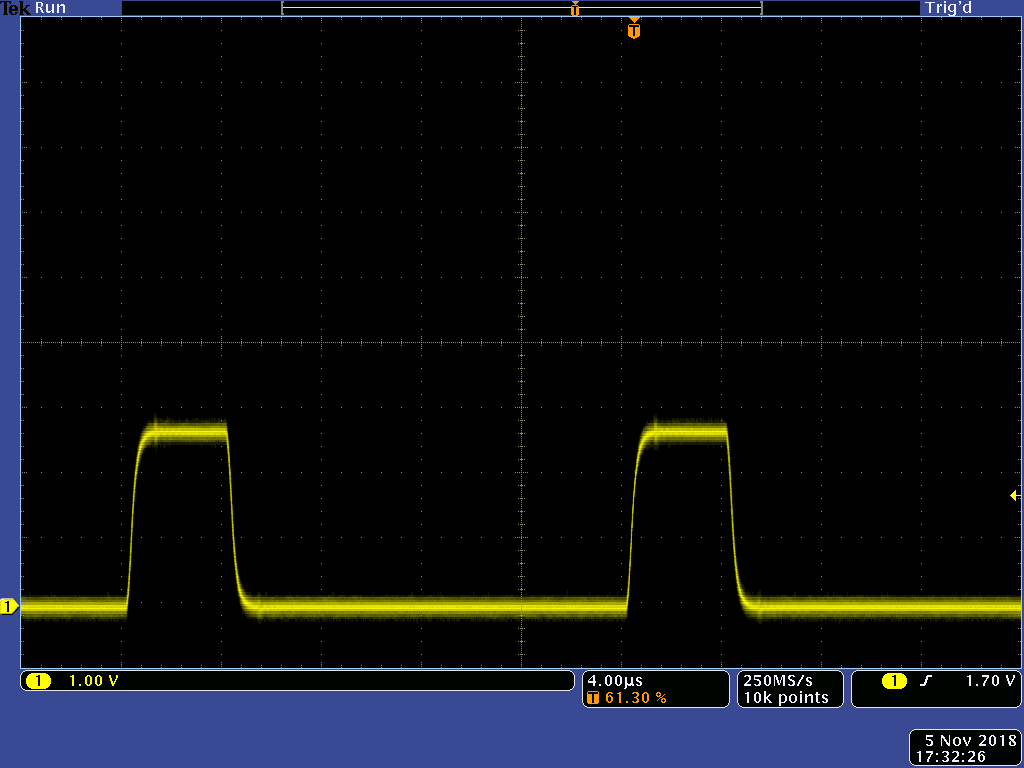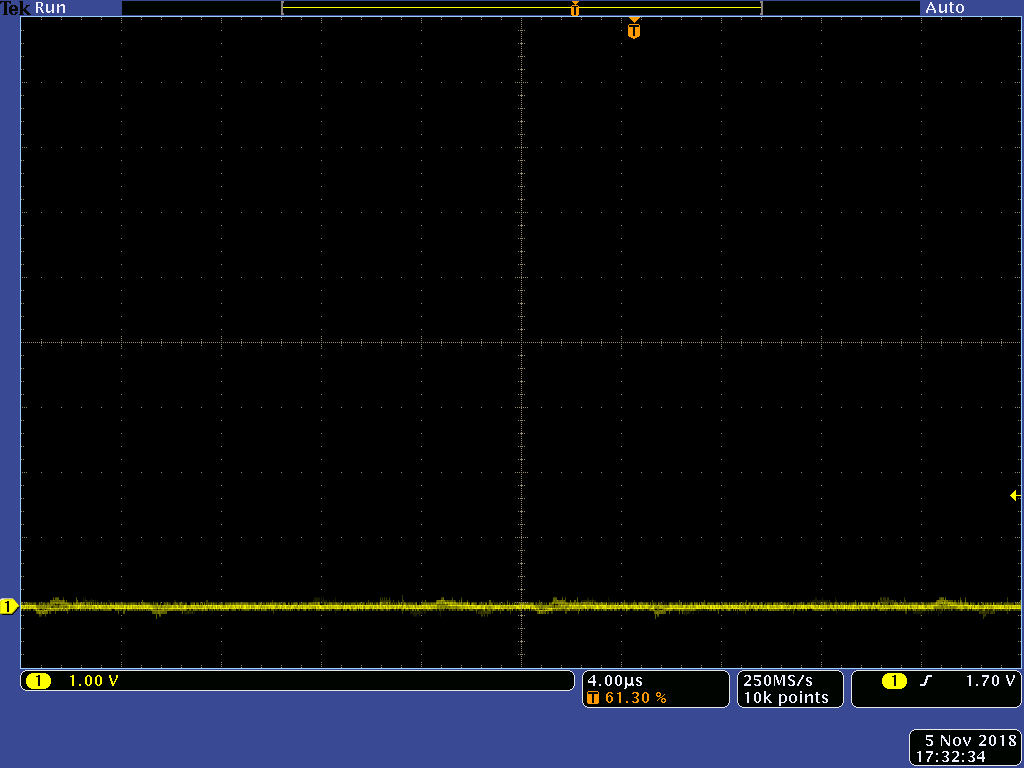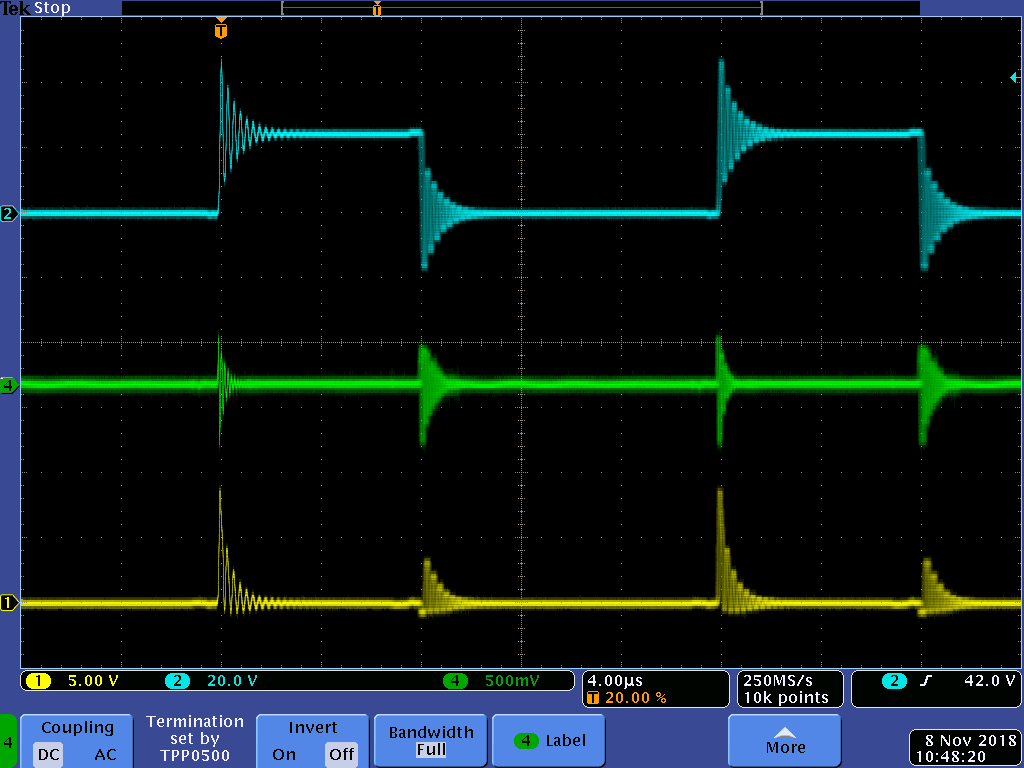Hello community
I have a DRV8702 running in independent half-bridge mode. When I drive the input IN1/PH the motor connected to half-bridge 1 is working as desired and the motor on half-bridge 2 is off.
When I drive the input IN2/EN the motor connected to half-bridge 2 is working but the motor on half-bridge 1 also makes some noise and the temperature of the DRV increases for about 15°C compared to driving the input IN1/PH. The following measurings show the problem.
Here is my circuit and the measurements:
Circuit for PWM_M2 is exactly the same as above.
Driving IN1/PH / Measuring IN1/PH --> OK
Driving IN1/PH / Measuring IN2/EN --> OK
Driving IN2/EN / Measuring IN1/PH --> NOT OK
Driving IN2/EN / Measuring IN2/EN --> NOT OK
I have the same problem with multiple boards.
Do you have any ideas why this could happen? How can driving IN2/EN cause such a signal at IN1/PH?
Thank you for helping







